The Falmouth Board of Selectmen have decided not to continue the legal battle over two wind turbines that began operation at the town’s wastewater treatment facility in 2010 and 2012. The decision comes in the wake of a ruling from Massachusetts Superior Court last week that called for immediate cessation of turbine operations. Wind 1 has been shut off since 2015 by a previous court ruling, and Wind 2 has been operating only during the day after being found to exceed the background ambient noise at night by more than is allowed.� The turbines have been challenged on several legal fronts, including the initial permitting, nuisance, and decreased property values. The town will now grapple with the costs of dismantling and paying off loans taken to erect the turbines; most of the financial obligations are to state-funded clean energy programs, and there is hope that some or most will be forgiven, though nothing is certain on that front.
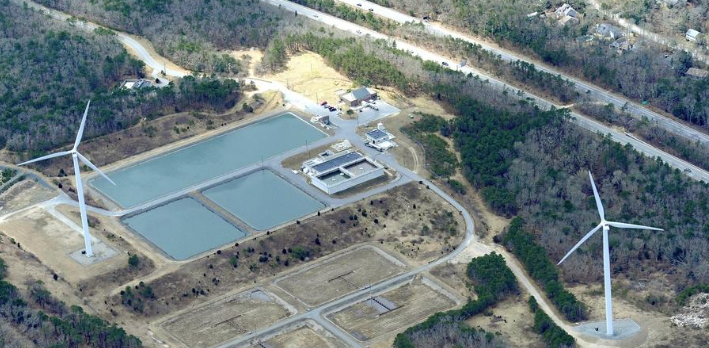
In the recent case that apparently broke the camel’s back for the Selectmen, the judge affirmed a 2013 Zoning Board of Appeals nuisance ruling that called for the Building Commissioner to “take whatever steps necessary to eliminate the nuisance” at the property of Barry and Diane Funfar. The town appealed that ruling (legally challenging its own Zoning Board of Appeals), and this case was addressing that appeal. Several other cases remain in the pipeline, but the Selectmen’s decision should lead to an end to the legal battles. While the judge in this case affirmed the nuisance experienced by the Funfars, he rejected the property value claim, noting that the most reliable data, from sales in 2012 and 2013, show a 3% decline in value in the Funfar’s neighborhood, not enough to point to the turbines as a deciding factor.
Mr. Funfar, who used to spend much of his time creating extensive gardens in his yard, had found himself unable to be outside, and eventually, even to stay in the house. The Funfars had begun spending time in the Dominican Republic to escape the noise impacts. “It’s rather euphoric,” he said after the ruling was announced. “We had a very good life here in our retirement, and I had my grandkids up here all the time helping me in my yard, and we can get some of that back now….It’s just such a tremendous relief to me and it’s still taken these past couple of days to sink in.”
Susan Moran, chair of the Board of Selectmen, noted that “As a board, despite all our personal differences and philosophies, we feel we have done all we can do to honor the town meeting ballot votes in 2013 as well as the 2015 nonbinding vote for the town to continue to operate the two turbines.” Appealing this decision and continuing to fight the other challenges would leave the town “right where we have been for the last seven years — with uncertainly and mounting legal expenses,” Moran said.
Christina C. Rawley, a member of the Falmouth Climate Action Team, which had fought to keep the turbines operating, said, “It’s very upsetting and extremely disappointing. We’re all sort of [taken aback] by it and trying to decide now what is the best way forward.” At the same time, Rawley stressed that “We are not coldhearted people by any means….and it was never anybody’s intent to harm anyone. How does a town or a nation make [its] decisions is what is at question here. How can we possibly meet the problems that are outstanding in our society?”
Since the very beginning of all this, the Falmouth situation has been a good example of the pitfalls of siting turbines close to densely populated neighborhoods. Few wind turbines have so many homes so close; at least 184 homes within a half mile of just these two turbines (a third turbine, privately owned, continues to operate; the legal challenges have been primarily directed at the town-run turbines). With so many homes so close, it was inevitable that a critical mass of impacted neighbors would arise.
In 2012, the town spent several months on a collaborative Wind Turbines Options Process that brought together town officials, impacted neighbors, and renewable energy advocates to explore whether the town could find ways to address or compensate those struggling with the noise. The possibility of the town buying some of the homes that had been most affected was on the table. At that time, about 10% of those within a half mile had lodged formal complaints (7 out of 18 homes within a quarter mile, and 12 of 166 from a quarter to half mile). Likewise, in 2010, amidst the initial outcry about unexpected noise levels after the first turbine went live, the town sent log sheets to 300 homes, for residents to note the times when noise was an issue for them; about a dozen were returned, or under 5%. We can presume that more people were bothered than participated in these initiatives, but it remains the case that it’s generally a relatively small percentage of the population that is especially sensitive to noise impacts.
This is one reason that towns have taken a wide range of approaches to wind turbine siting, ranging from minimal setbacks of as little as 500-1000 feet (in areas that don’t mind that their residents will regularly hear the turbines), to moderate setbacks of 1200-2000 feet (accepting that some residents will experience troublesome noise at times), to precautionary setbacks of 4000 feet or more, which hope to avoid causing noise intrusions for even the more sensitive members of the community. All of these approaches can be justified; the question is how any given town chooses to balance economic benefit (often high in farm and ranch communities), climate-change mitigation (minimal for any given project, but necessary collectively), changes to sense of place (also a factor in many rural communities), and impacts on the most noise-sensitive or otherwise susceptible members of their community.
The reality of life-changing impacts on a relatively small proportion of those hearing turbines is an especially fraught element in the debate; many infrastructure projects or industrial developments cause similar rates of disruption among their nearby neighbors. Courts and local governments have come down on different sides of this sensitive question, and it is here where towns will continue to face the most difficult and distressing decisions.
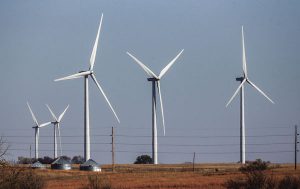 Clark County SD is in a legal battle over its decision to increase wind turbine setbacks from 2000ft to 3960ft (three-quarters of a mile). The Clark County Commission approved the 400MW Crocker Wind Farm, but based on local experience with a smaller wind farm, decided that more distance was needed between turbines and non-participating homes. As reported by the Watertown Public Opinion:
Clark County SD is in a legal battle over its decision to increase wind turbine setbacks from 2000ft to 3960ft (three-quarters of a mile). The Clark County Commission approved the 400MW Crocker Wind Farm, but based on local experience with a smaller wind farm, decided that more distance was needed between turbines and non-participating homes. As reported by the Watertown Public Opinion:
 South Dakota has the nation’s 4th-best wind resources, and wind is currently the source of 30% of the energy produced in the state, the 2nd highest proportion the nation—yet it lags behind
South Dakota has the nation’s 4th-best wind resources, and wind is currently the source of 30% of the energy produced in the state, the 2nd highest proportion the nation—yet it lags behind 
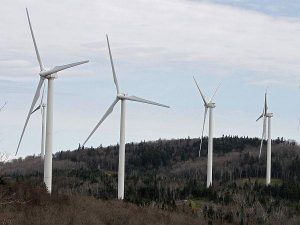 Vermont’s Public Service Board has released a draft of new rules for wind turbine siting which embraces a happy medium approach that should minimize adverse effects from noise, while providing wind developers the option of negotiating participation agreements with neighbors who are willing to live closer to turbines than the rules would stipulate.
Vermont’s Public Service Board has released a draft of new rules for wind turbine siting which embraces a happy medium approach that should minimize adverse effects from noise, while providing wind developers the option of negotiating participation agreements with neighbors who are willing to live closer to turbines than the rules would stipulate.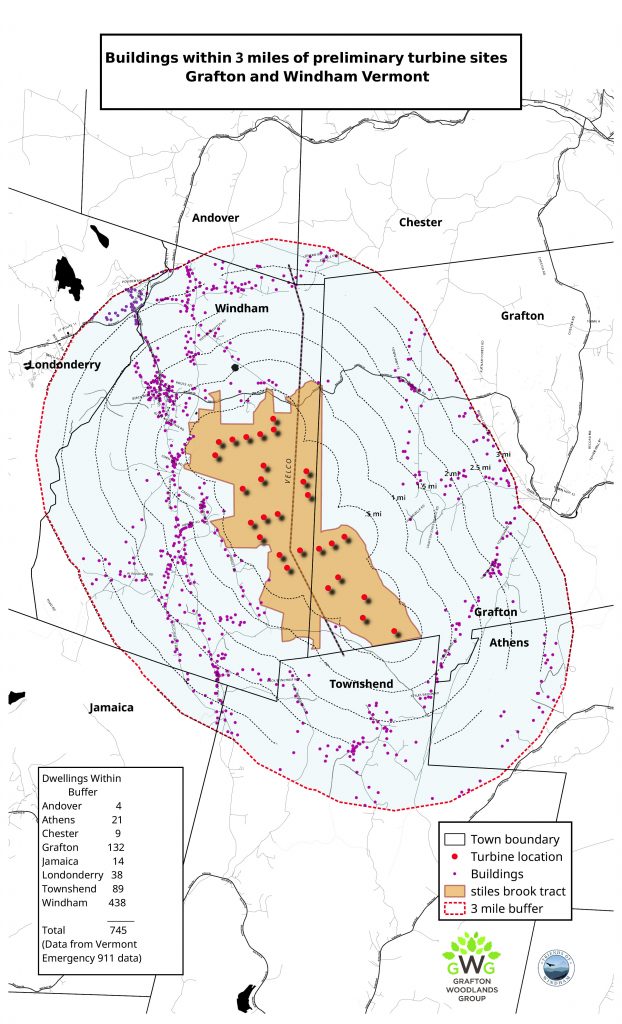
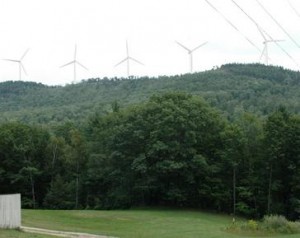
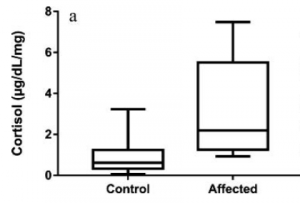 The overall results are fairly clear-cut. Here’s a graph of the two groups; the boxes show the 3 quartiles of results in each group (the bottom of the box being the level that 75% of the animals were above; the line across the box showing the level where half the animals were above, half below; and the top of the box the level that 25% of the animals were above), with the bars outside the box showing the remaining scatter of individuals. The mean among controls was .87, and among the affected group the mean was 3.16
The overall results are fairly clear-cut. Here’s a graph of the two groups; the boxes show the 3 quartiles of results in each group (the bottom of the box being the level that 75% of the animals were above; the line across the box showing the level where half the animals were above, half below; and the top of the box the level that 25% of the animals were above), with the bars outside the box showing the remaining scatter of individuals. The mean among controls was .87, and among the affected group the mean was 3.16 A closer look at the results suggests that, as usual in field studies, there is a lot more going on than the means and medians suggest. Here we see a plot of the 9 affected setts, with distance to nearest turbine on the bottom axis. Interestingly, there is a wide scatter of results, with some setts (2 of the 9) showing levels very similar to the controls, about half (4 of the 9) having somewhat elevated levels, and only 3 setts being highly elevated, above the highest of the control setts. Our first image shows this skew, with the upper quartile of the affected box stretching far above the middle line (and thus pulling up the mean to a significant degree).
A closer look at the results suggests that, as usual in field studies, there is a lot more going on than the means and medians suggest. Here we see a plot of the 9 affected setts, with distance to nearest turbine on the bottom axis. Interestingly, there is a wide scatter of results, with some setts (2 of the 9) showing levels very similar to the controls, about half (4 of the 9) having somewhat elevated levels, and only 3 setts being highly elevated, above the highest of the control setts. Our first image shows this skew, with the upper quartile of the affected box stretching far above the middle line (and thus pulling up the mean to a significant degree).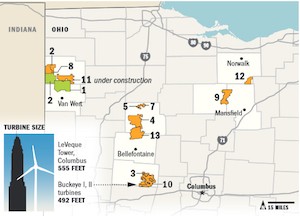

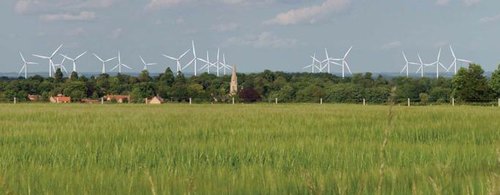
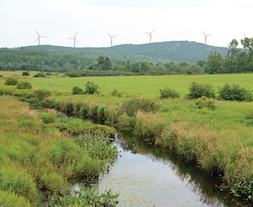
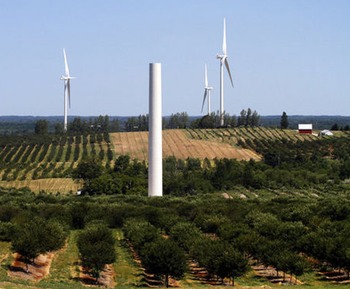
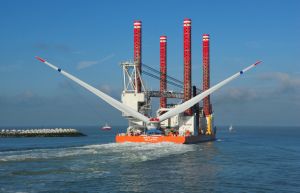 With all this in mind, Dominion Virginia Power’s first commitments to the Virginia Offshore Wind Development Authority
With all this in mind, Dominion Virginia Power’s first commitments to the Virginia Offshore Wind Development Authority  “Even with these restrictions placed on several recently constructed facilities, the board has received complaints regarding sounds produced by the operation of some facilities. These complaints have raised questions about whether the limitations that the board has previously adopted are adequate,” the PSB
“Even with these restrictions placed on several recently constructed facilities, the board has received complaints regarding sounds produced by the operation of some facilities. These complaints have raised questions about whether the limitations that the board has previously adopted are adequate,” the PSB 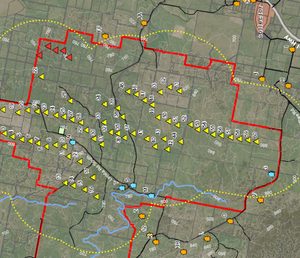 Meanwhile, the 63-turbine Collector Wind Farm has been received a
Meanwhile, the 63-turbine Collector Wind Farm has been received a 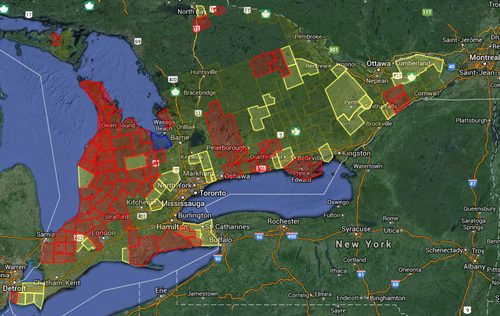
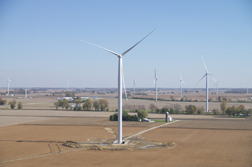 In addition, juwi is making provocative claims that BZA chair Jerry Acres is no longer capable of making an unbiased decision, thanks to comments he’s made suggesting regrets about his support of the Wildcat Wind Farm (left), which began operating early this year and has
In addition, juwi is making provocative claims that BZA chair Jerry Acres is no longer capable of making an unbiased decision, thanks to comments he’s made suggesting regrets about his support of the Wildcat Wind Farm (left), which began operating early this year and has 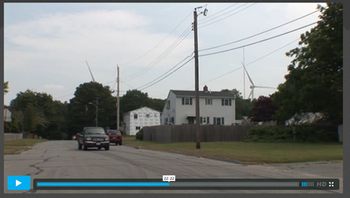 A new film from Fairhaven, MA, features the compelling real-life experiences of several local residents who live close enough to the wind turbines to hear them on a regular basis. The film, entitled Too Close, has a calm and caring tone, and is free of side-issues that can at times clutter the wind turbine siting debate (e.g., economic or carbon-reduction arguments), and focuses nearly solely on audible noise, with only a brief mention of infrasound. Also, refreshingly, quality of life (including sleep disruption and intrusion in backyard solitude) is given as much or more attention as more acute health effects, and the film is free of the more alarming/alarmist claims that are featured in some other concerned citizen documents.
A new film from Fairhaven, MA, features the compelling real-life experiences of several local residents who live close enough to the wind turbines to hear them on a regular basis. The film, entitled Too Close, has a calm and caring tone, and is free of side-issues that can at times clutter the wind turbine siting debate (e.g., economic or carbon-reduction arguments), and focuses nearly solely on audible noise, with only a brief mention of infrasound. Also, refreshingly, quality of life (including sleep disruption and intrusion in backyard solitude) is given as much or more attention as more acute health effects, and the film is free of the more alarming/alarmist claims that are featured in some other concerned citizen documents.